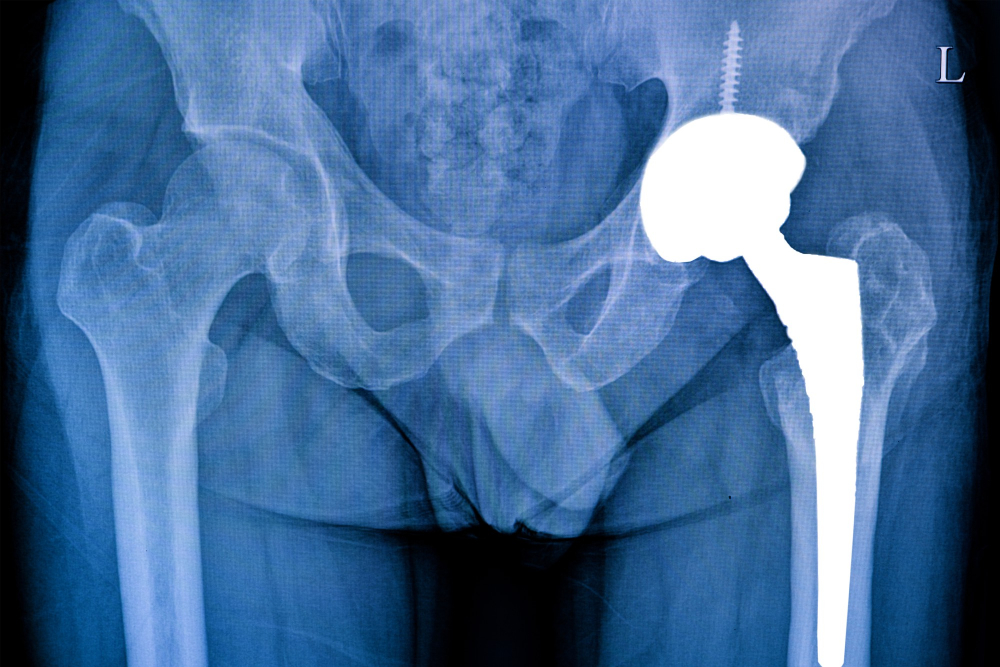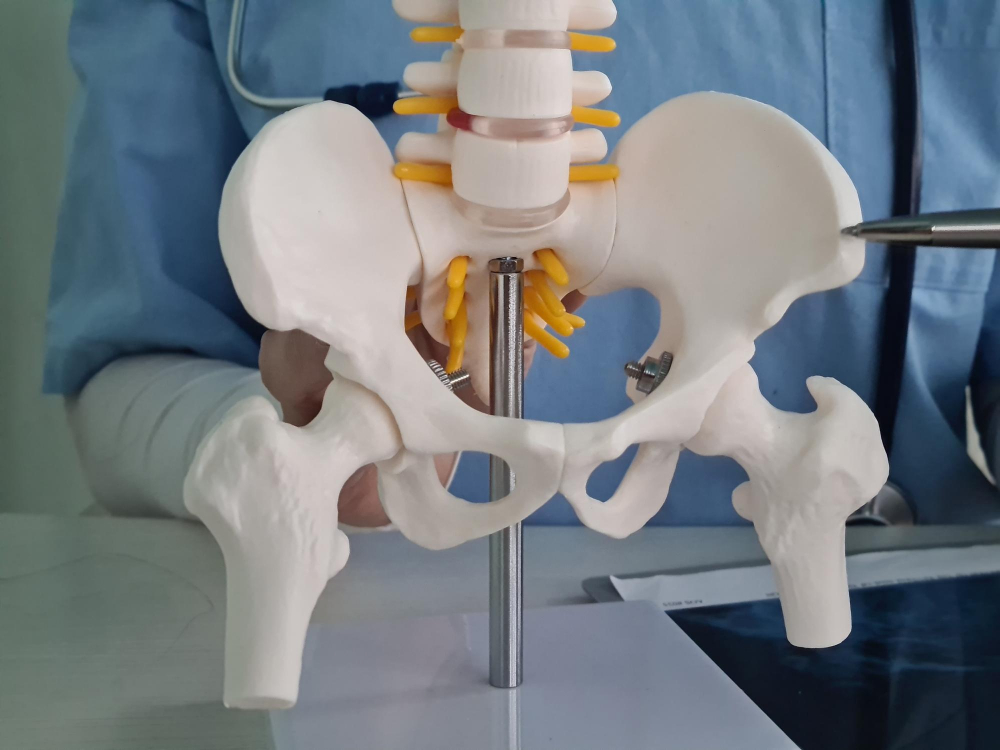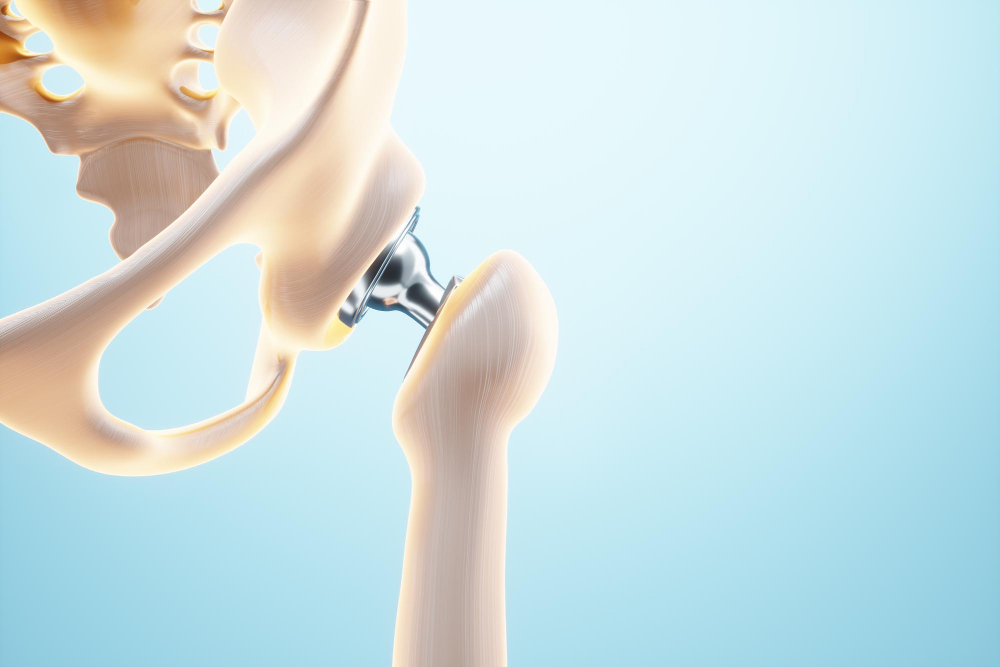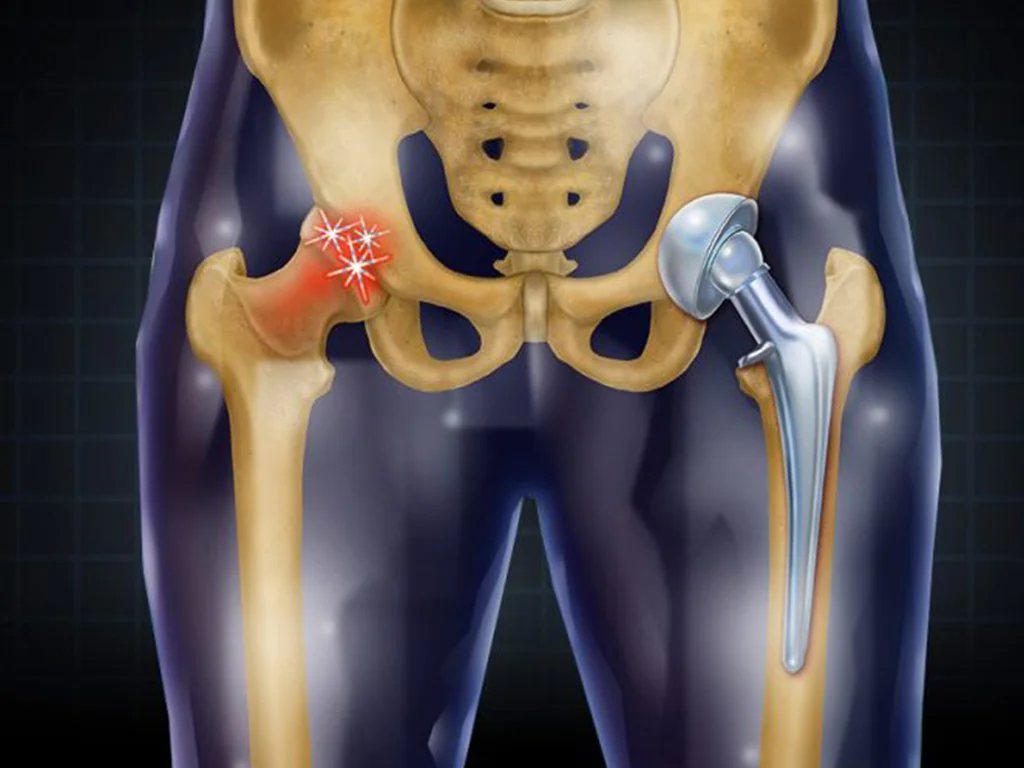Step into the world of hip replacement surgery, where aching joints and limited mobility are turned into a distant memory. Like a ray of sunshine breaking through the clouds, this medical procedure offers hope and relief to those who have been suffering from chronic hip pain.
But what exactly goes on behind the operating room doors? How has technology advanced to make this surgery safer and more effective? And what can you do to ensure a successful recovery?
Get ready to embark on a journey that will unveil the secrets of hip replacement surgery and shed light on the path to healing.

The Benefits of Hip Replacement Surgery
If you’re experiencing chronic hip pain and limited mobility, hip replacement surgery can provide significant relief and improve your quality of life. One of the primary benefits of hip replacement surgery is the reduction in pain. The surgery involves replacing damaged or diseased parts of the hip joint with artificial components, which can alleviate discomfort and enable you to engage in activities that were once difficult or impossible. Additionally, hip replacement surgery can greatly improve your mobility. After the procedure, you’ll notice increased flexibility and a greater range of motion in your hip joint, allowing you to move more freely and without pain.
Recovery time after hip replacement surgery varies from person to person, but most patients are able to resume their normal activities within a few weeks to a few months. However, it’s important to note that postoperative care plays a crucial role in the success of your recovery. This includes following your surgeon’s instructions regarding physical therapy exercises, taking prescribed pain medications, and attending follow-up appointments. By adhering to postoperative care guidelines, you can ensure a smoother recovery process and achieve optimal results.
Hip replacement surgery has proven to be a highly effective and reliable treatment option for individuals experiencing chronic hip pain and limited mobility. It can provide long-lasting relief, improve your quality of life, and enable you to enjoy activities that were once hindered by hip discomfort.
Advancements in Hip Replacement Techniques
Advancements in hip replacement techniques have revolutionized the field of orthopedic surgery, providing patients with improved outcomes and faster recovery times. One such advancement is the use of robotic-assisted hip replacements. This technology allows surgeons to plan and perform surgeries with a higher level of precision. During the procedure, the surgeon uses a robotic arm to assist in the placement of the prosthetic hip joint. This helps in achieving better alignment and positioning, leading to improved function and longevity of the implant.
Another significant advancement is the development of minimally invasive hip replacements. Unlike traditional open surgery, which requires a large incision, minimally invasive techniques use smaller incisions and specialized instruments. This approach reduces muscle and tissue damage, resulting in less pain, shorter hospital stays, and quicker recovery times for patients.
Studies have shown that both robotic-assisted and minimally invasive hip replacements have numerous benefits. Patients who undergo these procedures experience less blood loss, reduced scarring, and a lower risk of infection. They also report improved range of motion, decreased pain, and a faster return to their daily activities.

Preparing for a Successful Surgery
As you prepare for a successful hip replacement surgery, it’s important to understand the necessary steps and considerations to optimize your outcome and recovery. Preoperative precautions play a crucial role in ensuring a smooth and successful surgery. It’s important to inform your surgeon about any allergies, medications, or supplements you’re currently taking. Your surgeon may advise you to stop taking certain medications that can increase bleeding during surgery, such as blood thinners. They may also recommend certain lifestyle changes, such as quitting smoking and losing weight, to reduce the risk of complications during and after the procedure.
Rehabilitation exercises are an integral part of the recovery process after hip replacement surgery. Your healthcare team will provide you with a personalized exercise program to help improve your strength, flexibility, and mobility. These exercises will focus on strengthening the muscles around your hip joint, improving your balance, and increasing your overall endurance. It’s essential to follow your rehabilitation plan diligently and attend all scheduled physical therapy sessions to maximize your recovery.
Additionally, it’s important to prepare your home environment before the surgery. Make sure your living space is clean, clutter-free, and free from any potential hazards that may cause falls. Consider installing handrails in your bathroom and along staircases to provide additional support and stability. Arrange for someone to assist you with daily activities, such as cooking and cleaning, during the initial recovery period.
The Surgical Procedure and Recovery Process
During the surgical procedure for hip replacement, your damaged hip joint will be replaced with an artificial joint made of metal, plastic, or ceramic components. The surgery typically takes about one to two hours, and you’ll be under general anesthesia to ensure you’re comfortable and pain-free throughout the procedure.
The surgeon will make an incision along the side or back of your hip, then carefully remove the damaged bone and cartilage. The artificial joint will be inserted into the prepared bone, and the incision will be closed with stitches or staples.
After the surgery, you’ll be taken to a recovery room where you’ll be monitored closely. Pain medication will be provided to manage any discomfort you may feel.
The rehabilitation process will begin soon after the surgery, with a physical therapist guiding you through exercises to improve strength and mobility in your hip joint. This will help you regain your ability to walk and perform everyday activities.
While hip replacement surgery is generally safe, there are potential risks involved. These include infection, blood clots, dislocation of the artificial joint, nerve damage, and allergic reactions to anesthesia. It’s important to follow your surgeon’s post-operative instructions carefully, including taking prescribed medications, attending physical therapy sessions, and avoiding certain activities that may put stress on the new joint.

Life After Surgery
After hip replacement surgery, you can expect a recovery period that involves physical therapy, gradual mobility improvement, and a return to normal activities. Physical therapy plays a crucial role in helping you regain strength, flexibility, and range of motion in your hip joint. Your therapist will guide you through exercises that target specific muscles and joints, helping you rebuild your strength and improve your overall mobility.
During physical therapy, you’ll learn various exercises and techniques to promote healing and prevent complications. These exercises may include gentle stretching, low-impact aerobic activities, and resistance training. The goal is to gradually increase your activity level while ensuring proper healing of the surgical site.
It is important to note that complications may arise during the recovery period. While uncommon, potential complications include infection, blood clots, and implant failure. To minimize the risk of these complications, it’s essential to follow your surgeon’s post-operative instructions, attend all scheduled physical therapy sessions, and promptly report any unusual symptoms or concerns.
In addition to physical therapy, it’s important to maintain a healthy lifestyle after hip replacement surgery. This includes maintaining a balanced diet, maintaining a healthy weight, and avoiding activities that may put excessive strain on your new hip joint.
With proper care, dedication to physical therapy, and adherence to your surgeon’s guidelines, you can expect to regain your mobility and return to your normal activities after hip replacement surgery. Remember to be patient with yourself during the recovery process, as it may take several months to fully recover and regain strength in your hip joint.
Frequently Asked Questions
How Long Does the Hip Replacement Surgery Take?
Hip replacement surgery typically takes about 2-3 hours. The recovery time varies, but most patients can expect to be walking with assistance within a day or two. The success rate of this procedure is high, with over 90% of patients experiencing significant pain relief and improved mobility.
What Are the Common Risks and Complications Associated With Hip Replacement Surgery?
When it comes to hip replacement surgery, there are common risks and complications to be aware of. These can include infection, blood clots, and dislocation. However, with proper rehabilitation techniques, many patients are able to recover successfully.
Is There an Age Limit for Undergoing Hip Replacement Surgery?
There’s no specific age limit for hip replacement surgery. Success rates are high, and recovery time varies. Your doctor will assess your overall health to determine if you’re a good candidate for the procedure.

Can I Resume My Regular Activities and Exercise Routine After Hip Replacement Surgery?
After hip replacement surgery, you can resume your regular activities and exercise routine. Following a rehabilitation protocol is important to gradually increase your physical activities. Take precautions, but know that the long-term benefits of hip replacement surgery are worth it.
How Long Do Hip Replacements Typically Last?
Hip replacements typically last around 15-20 years, but it’s important to note that durability varies. While hip revision rates are low, it’s wise to take care of your new hip to maximize its lifespan.





